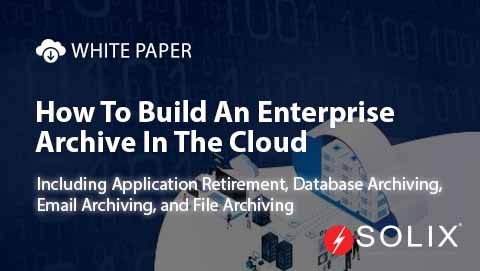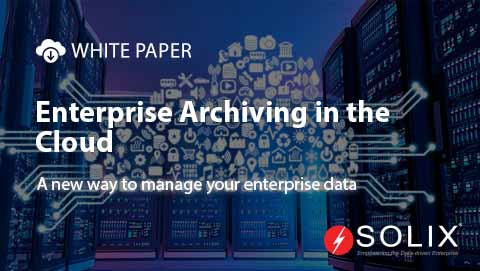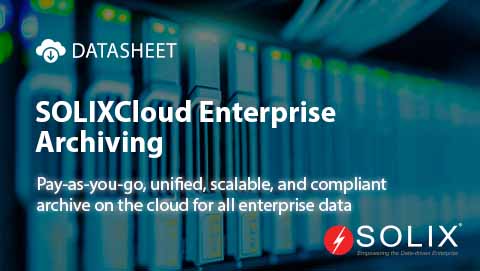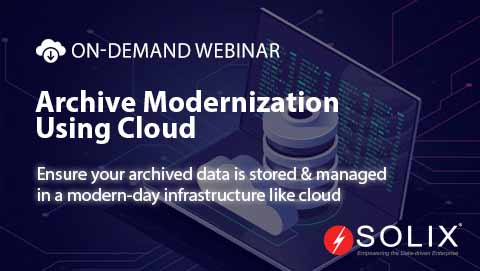Data Archiving Tools Optimization A Comprehensive Guide
When businesses deal with massive amounts of data, the importance of data archiving tools optimization cannot be overstated. Its essential to understand how to optimize these tools to ensure efficient data management, compliance, and cost savings. So, what exactly is data archiving tools optimization Simply put, its the process of enhancing your current archiving solutions to make them more efficient, reliable, and aligned with your organizations data management strategies. In this guide, we will explore the intricacies of optimizing these tools and how you can implement actionable strategies to achieve success.
As someone who has navigated the complexities of data management, I can tell you that the struggle is real. In my experience working in various roles, the challenge has often been not just managing data, but ensuring its handled in a way that maximizes its utility without compromising its integrity. Thats why understanding data archiving tools optimization is crucial for professionals looking to improve their data management practices.
Understanding Data Archiving
Before diving into optimization, its important to understand what data archiving is. Data archiving refers to the process of moving data that is no longer actively used to a separate storage system. This is done to free up resources, improve performance, and meet compliance requirements. However, its not just about storing data; its about ensuring that the archived data is easily accessible, secure, and manageable.
Many organizations are overwhelmed by the sheer volume of data generated daily. As a result, they may choose to simply archive everything, leading to inefficiencies. This is where optimization comes into play. Rather than adopting a one-size-fits-all approach, organizations should tailor their archiving strategies to suit their specific needs and data types.
The Role of Data Archiving Tools
Data archiving tools are software solutions that assist organizations in managing their archived data effectively. They allow businesses to automate archiving processes, ensuring that data is stored according to predefined rules and regulations. However, without proper optimization, these tools can become a burden rather than a benefit. So, how can you optimize these tools
First and foremost, assess the needs of your organization. This involves understanding what data is crucial for day-to-day operations and what can be archived. Regularly reviewing this data ensures that you are archiving meaningful information rather than cluttering your storage with unnecessary files.
Strategies for Optimization
Now that we have a clearer understanding of data archiving tools, lets explore actionable strategies for optimization
1. Implement Smart Policies Start by drafting clear and concise data archiving policies. Policies should define data retention periods, the types of data to archive, and the processes involved. Ensure that all stakeholders are aware of these policies, as compliance is crucial.
2. Utilize Automation Take advantage of automation features in your data archiving tools. Automating repetitive tasks can save significant time and reduce the risk of human error. Tools like Solix Archive Manager can help streamline this process. Explore how Solix Archive Manager can enhance your archiving efforts.
3. Prioritize Security Data security should never be an afterthought. Make sure that your archived data is stored in a secure environment, using encryption and access control measures to protect sensitive information. This aligns with compliance requirements and enhances trust in your data management practices.
4. Regular Audits Conduct regular audits to evaluate the effectiveness of your archiving strategies. This will help you identify any potential issues and make any necessary adjustments to improve your overall approach. Remember, optimization is an ongoing process.
Measure Metrics for Improvement
The optimization of data archiving tools isnt complete without a robust metric system in place. Measuring the performance of your archiving processes helps you understand which areas need improvement. Key performance indicators (KPIs) may include retrieval time, storage costs, and data accessibility rates.
By analyzing these metrics, you can iterate and fine-tune your data archiving strategies, thus ensuring that your tools are serving their purpose effectively. Collaboration with your IT team can yield valuable insights into how optimization efforts are translating into actual benefits for your organization.
Real-Life Application and Lessons Learned
In my past experiences, Ive had the opportunity to work with teams that faced archiving challenges, notably during regulatory changes. One company I collaborated with relied heavily on manual processes for data management and faced compliance risks due to improper archiving. It wasnt until they focused on data archiving tools optimizationstarting with implementing automated retention policiesthat they began to see dramatic improvements in both efficiency and compliance.
They introduced a comprehensive archiving strategy that eliminated unnecessary data retention while ensuring the most critical data was preserved securely. The lessons learned here resonate across industries optimization ties directly into strategic data management and overarching business goals.
Connecting with Solix for Optimization Solutions
As organizations look to streamline data management and ensure compliance, partnering with experts in the field becomes essential. Solix provides comprehensive solutions that address various aspects of data archiving tools optimization. From automated archiving processes to ensuring data security, Solix offerings are designed to support businesses at every stage of their data management journey.
If your organization is ready to optimize its data archiving tools, consider reaching out for a consultation. You can call Solix at 1.888.GO.SOLIX (1-888-467-6549) or visit their contact page for further information.
Wrap-Up
Data archiving tools optimization is not just a trend; its a necessity in todays data-driven world. By implementing targeted strategies and leveraging the right solutions, organizations can redefine how they manage their data, ensuring compliance, cost-effectiveness, and accessibility. The journey may seem daunting, but with a focused approach and the support of specialists like Solix, you can transform your data management techniques into a powerful asset for your business.
About the Author
Kieran is a data management enthusiast with extensive experience in optimizing data archiving tools. He believes that effective archiving is crucial for any businesss success. Through real-life applications and a focus on data archiving tools optimization, Kieran aims to empower organizations to manage their data effectively and securely.
Disclaimer The views expressed in this article are solely those of the author and do not necessarily reflect the official position of Solix.
Sign up now on the right for a chance to WIN $100 today! Our giveaway ends soon‚ dont miss out! Limited time offer! Enter on right to claim your $100 reward before its too late! My goal was to introduce you to ways of handling the questions around data archiving tools optimization. As you know its not an easy topic but we help fortune 500 companies and small businesses alike save money when it comes to data archiving tools optimization so please use the form above to reach out to us.




